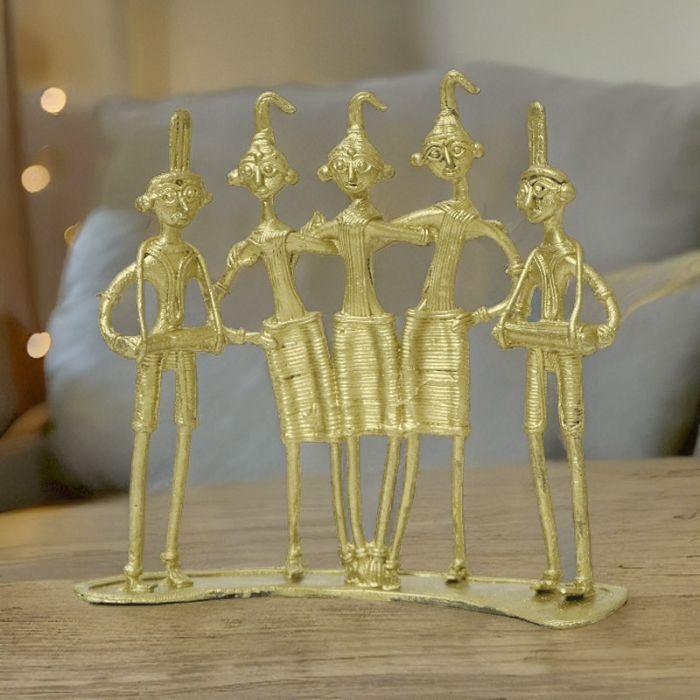Introduction
Dokra sculpture and Dokra metal art stand as exquisite embodiments of India's rich artistic heritage. These traditional crafts have been cherished by art enthusiasts and collectors worldwide. In this concise exploration, we will unveil the captivating world of Dokra sculpture, shedding light on its history, the intricate crafting process, and its significance in contemporary art.
A Glimpse into Dokra Sculpture's Heritage
Tracing Ancient Origins
Dokra sculpture finds its origins in the ancient tribal communities of India, particularly in states like Chhattisgarh, Odisha, and West Bengal. This art form's roots reach back over 4,000 years, making it one of the oldest known casting techniques globally.
The Artistic Process Behind Dokra Metal Art
The Lost-Wax Casting Technique
Dokra metal art is characterized by its unique and meticulous crafting process, known as the lost-wax casting method. Here's a simplified overview of how this technique works:
- Creation of the Sculpture: An artisan begins by meticulously sculpting the desired design using beeswax. This wax model serves as the mold for the final piece.
- Application of Clay: The wax model undergoes a coating process with layers of clay to form a mold. This clay mold is then allowed to dry, creating a hollow casing.
- Melting of the Wax: The clay mold is heated, causing the wax to melt and flow out, leaving a cavity that mirrors the sculpture's shape.
- Pouring Molten Metal: Molten brass or other metals are carefully poured into the cavity, filling the space once occupied by the wax.
- Cooling and Refining: After the metal has solidified, the clay mold is broken to reveal the rough metal casting. Artisans then painstakingly clean and refine the piece, adding intricate details by hand.
Dokra Sculpture's Contemporary Relevance
Dokra in the Modern Art World
While Dokra sculpture has deep historical roots, it continues to thrive in today's contemporary art scene. Its rustic charm, unique aesthetics, and cultural significance make it a sought-after art form for collectors, interior decorators, and art enthusiasts alike.
Conclusion
Dokra sculpture and Dokra metal art beautifully weave a tapestry of India's cultural heritage, combining ancient origins with contemporary appeal. As Dokra bridges the gap between tradition and modernity, it remains a testament to the artistry and creativity of the skilled artisans who breathe life into these magnificent pieces. Whether displayed in homes or galleries, Dokra sculptures continue to captivate and inspire, making them a true treasure of Indian artistry.

